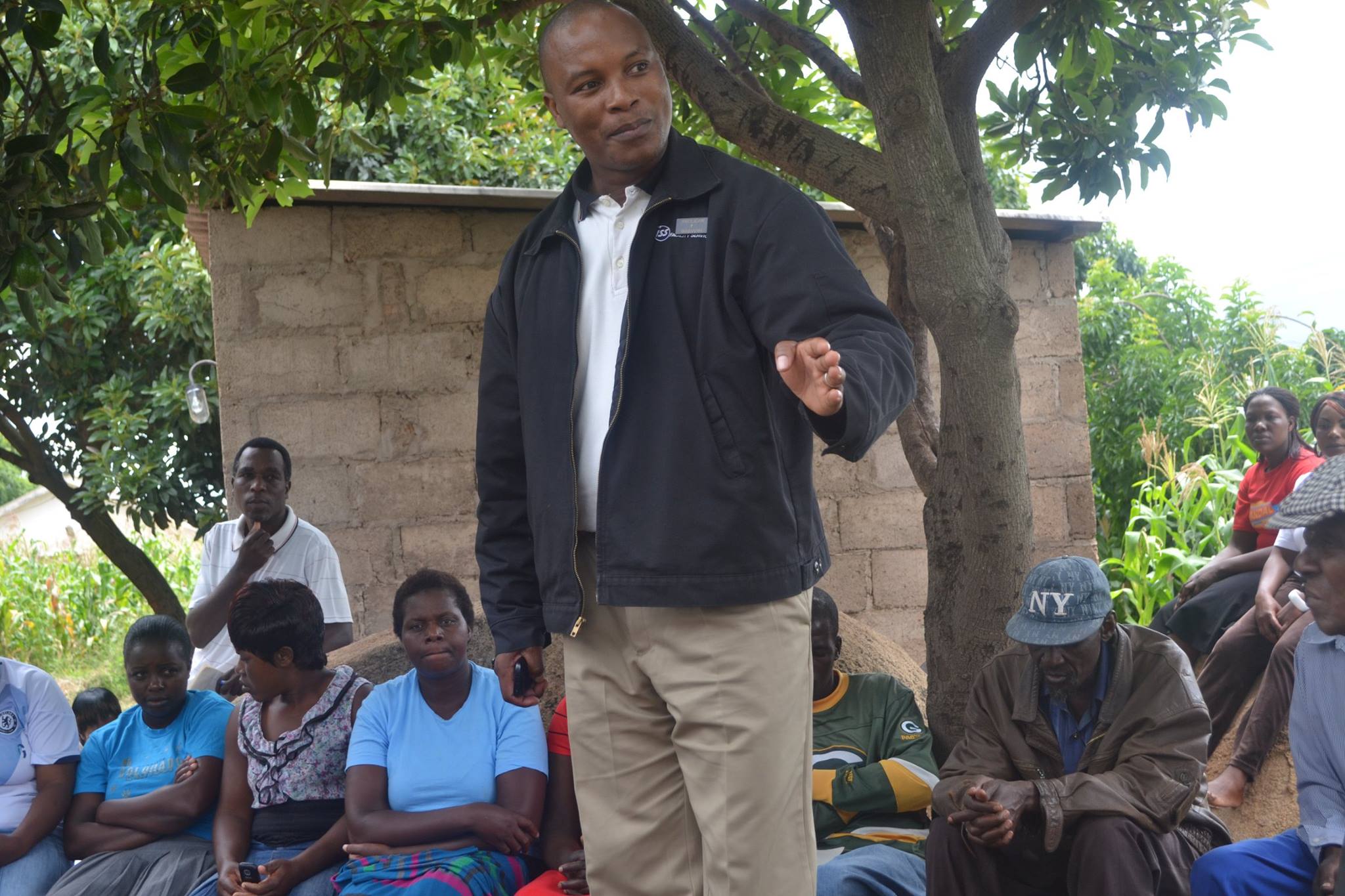|
Getting your Trinity Audio player ready...
|
Zimbabwe Coalition on Debt and Development (ZIMCODD)
The Reserve Bank of Zimbabwe (RBZ) made a significant move on the 5th of April 2024, releasing the 2024 Monetary Policy Statement (MPS) and introducing a new currency, the Zimbabwe Gold (ZiG). This policy also brought in a series of measures, such as adjusting interest rates and statutory reserve requirements and eliminating bank maintenance and service charges on accounts below US$100 per month.
The 2024 MPS was unveiled when the market was rapidly self-dollarizing, with over 80% of economic transactions being conducted in United States dollars (USD). This shift was primarily due to persistent local currency volatility, which saw it lose over 70% of its value in the first three months of 2024. The constant, severe fluctuation of the local currency has led to unbearable price growth for consumers.
History is a painful reminder of losses incurred by economic agents over the years since the nation started currency revaluations in 2006. Between early 2006 and early 2009, the RBZ officially revalued the Zimbabwe dollar at least thrice before dumping it for the USD under a multicurrency regime. Again, since its reintroduction in early 2019, Zimbabwe has witnessed three (3) types of local currency: the RTGS dollar in February 2019, the Zimbabwe local dollar (ZWL) in June 2019, and now the ZiG in April 2024.
Whenever a new local currency is launched, economic agents lose a significant portion of the value of their deposits and savings kept in the banking sector. This phenomenon has primarily reduced public confidence in banks and the government’s monetary policies, encouraging pillowcase/mattress banking, particularly for the informal sector economy. Yet, public confidence in the government and its policies is the primary prerequisite for any successful local currency.
In its analysis of the 2024 MPS, ZIMCODD commended ZiG’s concept of anchoring the currency with reserve assets and currencies like gold and USD, seeing it as a potential solution to the recurring currency conundrum. However, given the current circumstances, one must ask: Can the ZiG withstand the dwindling public confidence in the local currency? Against this background, the Zimbabwe Coalition on Debt and Development (ZIMCODD) seeks to proffer some recommendations that may go a long way in rebuilding market confidence and durably stabilizing the newly structured currency, the Zimbabwe Gold (ZiG).
Key Recommendations
The following are some of the critical recommendations ZIMCODD believes that authorities must consider for ZiG to succeed:
Political Commitment
In theory, economics could be non-political. Yet, in practice, politics and economics have a direct relationship. In short, economics needs political support. As such, there is a need for adequate political will to support the swift implementation of 2024 monetary policy measures together with other critical sector-wide reforms.
Policy Consistency
The monetary authority has announced various policy measures to tame price and currency instability in 2024. The fiscal authority is also expected to institute fiscal policies to bolster the monetary policy front. As such, there is a need to fully implement these policies while maintaining consistency in several interrelated ways: internal, vertical, and horizontal consistency.
Citizen Participation
The RBZ, in particular, and the government, in general, must reckon that citizen participation (CP) is a crucial element of good governance as it allows citizens to inform, evaluate, monitor, and influence decisions that affect them daily. The involvement of citizens in public decision- making is key for:
- Democratization – engaging citizens in the policy formulation, implementation, and evaluation of policies of their own govt.
Public policy improvement– academics, technocrats, civil society, NGOs, Church, etc, provide informed advice. - Legitimation – appealing for public acceptance in policymaking procedures and outcomes increases policy durability.
- Persuasion – convincing skeptics and critics of the government’s intentions is essential. Co-optation– subduing public criticism by recruiting potential critics in the policymaking process.
- Assessment of domestic public opinion – allows the government to evaluate what citizens want, expect, or will tolerate in public and economic policy.
- Relationship building – allows the creation and institutionalization of a consultation routine between the government, its agencies, and the interested public.
Fiscal Discipline
Zimbabwe has decided to back its currency with commodities and reserve currencies, which is good. The onus is now on the Treasury to live within its means primarily to allow the RBZ to adjust the supply of ZiG to maintain confidence in future gold convertibility. As such, there is a need for increased fiscal discipline if the ZiG is to succeed. The government must curb public resource leakages through corruption, review national projects and programs to identify misplaced priorities, redirect expenditures to social sectors, and reform its long-term infrastructure financing models to reduce pressure on the fiscus. Only through fiscal discipline will the RBZ be able to cut on its quasi-fiscal operations and achieve monetary discipline.
ZiG Exchange Rate Regime
The Bank has announced that the ZiG exchange rate will be determined by market forces of demand and supply on the WBWS interbank market, with it only intervening to clear the resultant disequilibrium. But this is not new. The Bank has held this position since 2019. Yet, the local currency price discovery process is still experiencing solid structural bottlenecks. It is the public’s view that a fully floating ZiG exchange rate, when coupled with sound fiscal management, will subdue speculative attacks to help win the war against the black market.
There is also a need for increased efforts to subdue exchange rate multiplicity, which sustains corruption, rent-seeking, and round-tripping shenanigans. It is the public’s view that gold coins and gold-backed digital tokens (GBDT) trading should be discontinued as they risk creating unnecessary gold demand, which constrains an accelerated accumulation of reserves. These gold coins & GBDT will likely have their own exchange rates in the market. At least following the global 10-15% rule of thumb, the ZiG notes must also be made available and easily accessible to the transacting public. Otherwise, the ZiG notes and coins will also have a different exchange rate from that of ZiG electronic balances, creating a fertile ground for parallel market activities.
Create ZiG Demand
There is a need to create demand for the local currency to help prop its value against foreign currency. The government is the single largest buyer and seller of the economy’s goods and services. To help create ZiG demand in a multicurrency regime, payment of all government taxes and government services must be settled in ZiG. However, it must take a gradual approach to avoid the excessive creation of unbacked ZiG, which fuels depreciation and inflationary pressures in the economy.
Increase RBZ Transparency
Since the ZiG concept is based on anchor reserve assets, there is a need for increased transparency at the RBZ, such as independent auditing of gold reserves in vaults and timeous publication of vital monetary aggregates like reserve money (M0). Transparency will foster better communication between RBZ and all its stakeholders, thereby reducing uncertainty, building trust, and contributing to practical policy-making. The key pillars for the central bank transparency are:
Governance: Transparency principles related to RBZ governance (legal structure, mandate, autonomy, decision-making arrangements, risk management, internal accountability, communication, and confidentiality).
Policies: Transparency practices concerning RBZ monetary and financial policies (policy frameworks, policy decisions, and supporting analyses).
Operations: Transparency in RBZ operations (instruments, coverage, and access).
Outcome: Disclosure of the impact and results of RBZ policies and operations (ex-post reports: governance actions, policies, and operations).
Official Relations: Transparency in RBZ interactions with the government and other agencies (agency, services, consultation arrangements, cooperation, and commitments).
Adopt Advanced Financial Technologies
There is a chance for ZiG to succeed if the RBZ and banks adopt advanced technologies such as distributed ledger technology, which guarantees transparency and efficiency of transactions and is even difficult to disrupt. This ensures that all market transactions are safely recorded, as no documents can be falsified since all data is immutable. This will circumvent the dangers of reliance on centralized, traditional database systems, which are highly prone to manipulation, may be hacked, and are susceptible to genuine human errors. In addition, advanced technologies are vital in ensuring precious mineral production tracking & monitoring to minimize chances of leakages through illicit trading.
Robust Reform Agenda
The economy is characterized by structural rigidities – characteristics within an economic system that constrain or delay economic growth and development – that hinder the efficient functioning of markets. For instance, economic structures, which encompass the composition of industries, the type of goods produced, and technological sophistication, influence the rate of structural learning and impact domestic production, exchange rates, income distribution, and institutional performance. These rigidities are causing excessive pricing distortions in the economy, hence the need to swiftly undertake robust reforms, particularly:
Economic reforms – establishing a market-determined ZiG exchange rate, ending all quasi- fiscal operations (QFOs) by RBZ, tightening monetary policy stance, pursuing fiscal discipline, and improving government revenue collection, expenditure management, and public service delivery.
Governance reforms – enhancing justice delivery, implementing political reforms, increasing public sector transparency and accountability, strengthening anti-corruption mechanisms, and enhancing security, safety, and respect for all rights and freedoms.
Land tenure system reforms- ensuring the transferability and bankability of tenure systems, improving access to finance, undertaking land audits, etc.
Diversification– the economy must shift away from a single income source (mining) to multiple sources from a growing range of sectors and markets. This helps manage volatility and provides a more stable path for equitable growth and development.
Central Bank Independence- the RBZ must be able to make monetary policies that are not dictated by political considerations. This gives monetary policy credibility, which is key to reducing inflationary expectations.
Climate-smart Agriculture
The underperformance of the agriculture sector due to climate change has a considerable bearing on prices. The food basket alone constitutes a weighting of 31/100 in the calculation of the all-items consumer price index (CPI). As such, Zimbabwe must embrace climate-smart agriculture (CSA). This is an integrated approach to managing landscapes (cropland, livestock, forests, and fisheries) and addressing the interlinked challenges of food security and accelerating climate change. Therefore, CSA helps increase productivity, enhance resilience, and reduce emissions.
Domestic Resource Mobilization (DRM)
Zimbabwe must make better use of and maximize existing natural resources rather than relying on borrowing. Unsustainable debt jeopardizes government finances, fuels exchange rate volatility, and heightens interest, tax, and inflation rates, which harms saving and investment. DRM allows nations to fund their own development goals, finance gender-responsive public services, and reduce economic, social, and gender inequalities. As such, pursuing DRM will provide a long-term path to sustainable development finance:
- Value addition and beneficiation, particularly in the mining and agriculture sectors.
- Formalization of the informal sector
- Tax reforms, for example, integrating ICT into the tax systems
- Strengthening of Public Financial Management (PFM) systems
- Fiscal decentralization reforms
Conclusion
It remains the public’s view that while accumulating reserves to back the ZiG is crucial, having an independent and effective central bank that the public can trust is paramount. As such, authorities must swiftly undertake bold reforms to regain lost market confidence. Only through social consensus and swift implementation of sector-wide reforms (public and private sector alike) will the ZiG be able to perform the main functions of money: store of value, medium of exchange, and unit of account.






